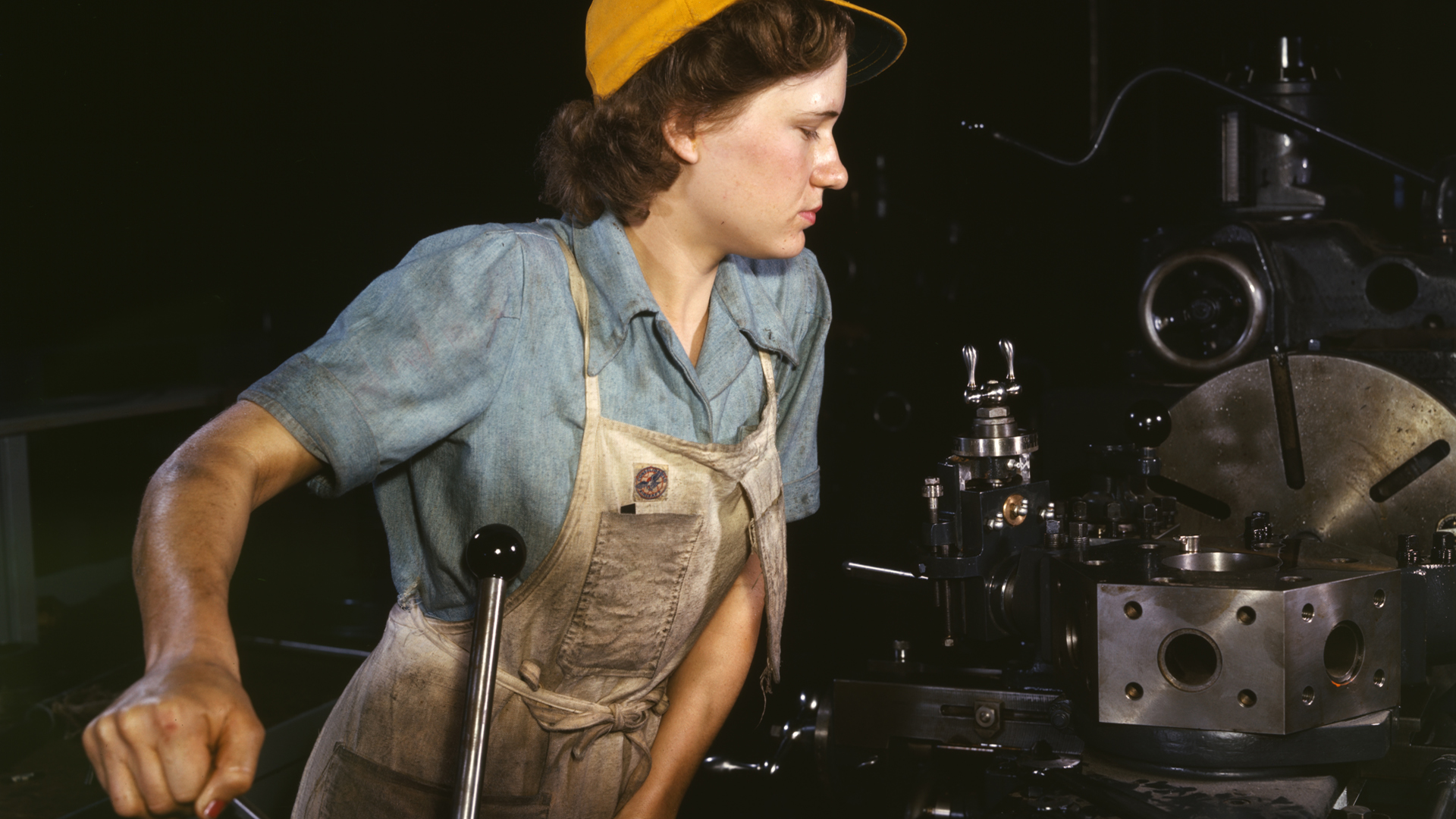

The backdrop for the beginning of the forties decade is a nation still suffering from remnants of the Great Depression, mostly in the area of unemployment. Within four days of the Pearl Harbor attack (December 7th, 1941), the United States was fully involved in a world war and all of our resources had to be mobilized for the fight. Four months later, Tuesday, 28 April 1942, Americans gathered in the evening around their radios to listen to President Franklin D. Roosevelt speak to the the nation about the tremendous challenges ahead. “There is one front and one battle,” the president declared, “where everyone in the United States—every man, woman, and child—is in action, and will be privileged to remain in action throughout this war. That front is right here at home, in our daily lives, and in our daily tasks.
The amazing demand for labor during the war years greatly changed the work place, creating many opportunities and choices for American workers who had grown accustomed to the limits of the Great Depression, especially women and African-Americans.By 1945, unemployment had virtually disappeared, and wartime manufacturing and economic growth had managed to generate prosperity and financial confidence for the American people.
The forties are defined by World War II, although the war ended in 1945. During the second half of the decade, the American people were able to “cut loose” in an effort to make up for the sacrifices of the Great Depression that was followed by a horrific world war.
In popular dancing, the Lindy Hop or the Jitterbug made its appearance at the beginning of the decade. It was the first dance in two centuries that allowed individual expression. GI’s took the dance overseas when they to war, dancing with local girls, barmaids, or even each other if necessary. Rosie the Riveter was the symbol of the working woman, as the men went off to war and the women were needed to work in the factories. GIs, however, preferred another symbol, the pin-up girl, such as Betty Grable were mounted on lockers and inside helmets to remind the men what they were fighting for. Wherever American soldiers went, even the first to arrive would find a picture of eyes and a nose, with the message, Kilroy Was Here!
Films were a huge form of entertainment for most Americans in the days before TV caught on. For 25 cents one could see a film and maybe even a double feature. There were usually some news stories, a cartoon, a serial western or cliff hanger, then the feature film. Your movie experience could last from 2-6 hours – and 10 cents more would buy a soft drink and popcorn.
Baseball was THE American pastime. Football was popular of course, especially in college but baseball was the king of American sports. Nearly everyone knew at least something about it and who was hitting and winning in the Major Leagues. The game was quite different though before integration, television and super stadiums.
Popular music was quite different. It was the radio, a 78-RPM record player, juke box, or live. Swing was the most popular form of music with the generation that fought the War, with Glenn Miller, Tommy and Jimmy Dorsey, Benny Goodman, Harry James, Les Brown, Woody Herman, Charlie Barrnet, Artie Shaw gracing the airwaves and music halls of the nation. The “Big Bands” floated on the airwaves every night across the country and even big named groups could be found doing one night stands in relatively small towns.